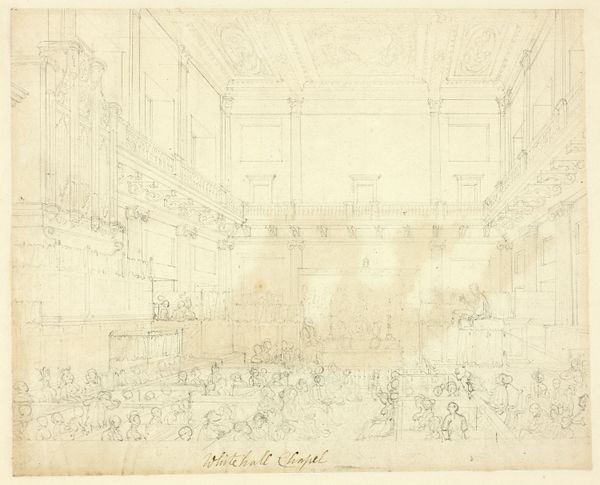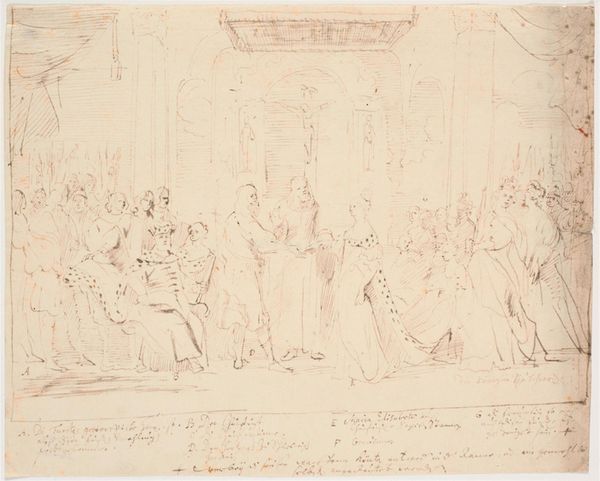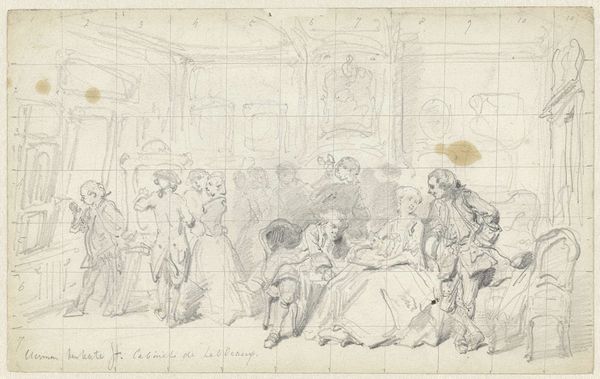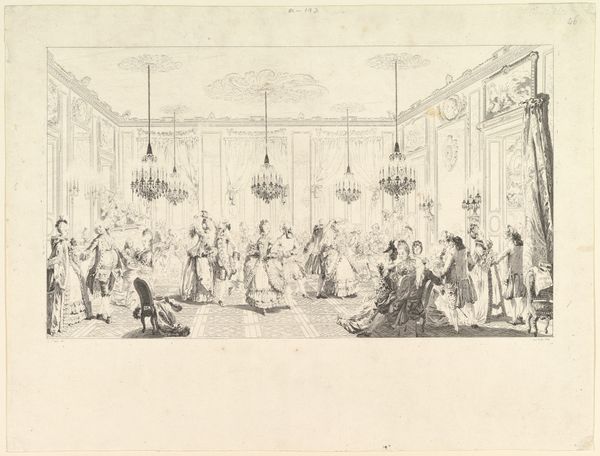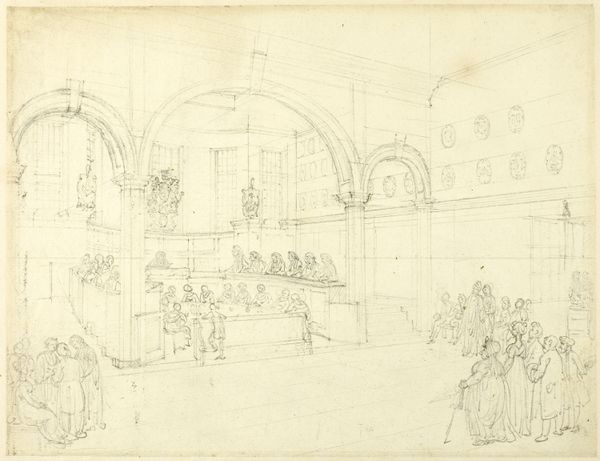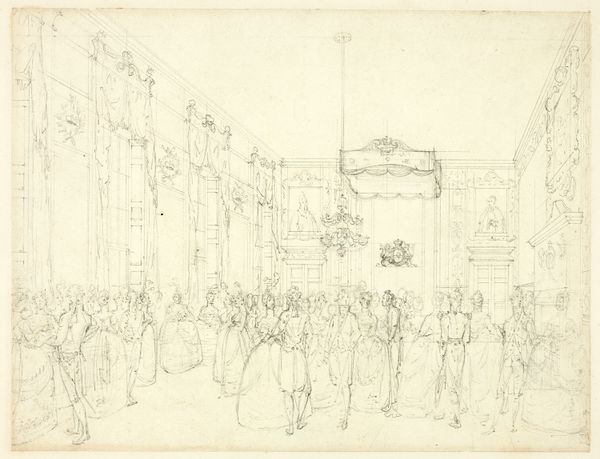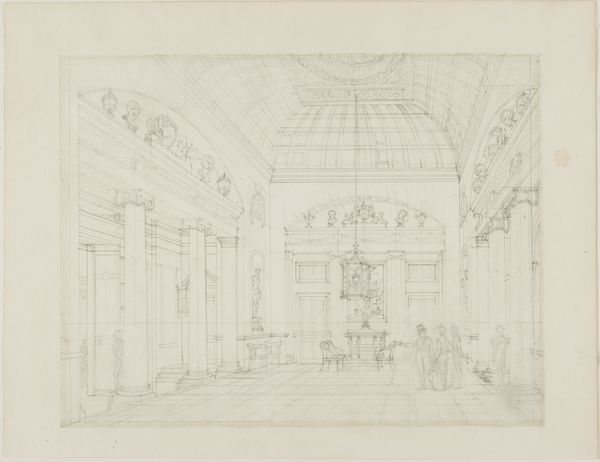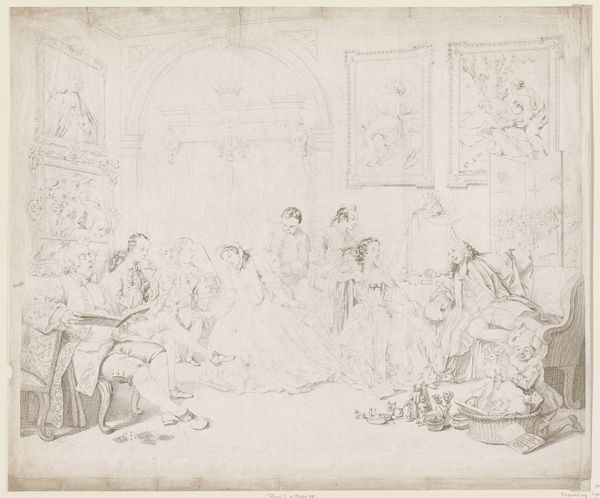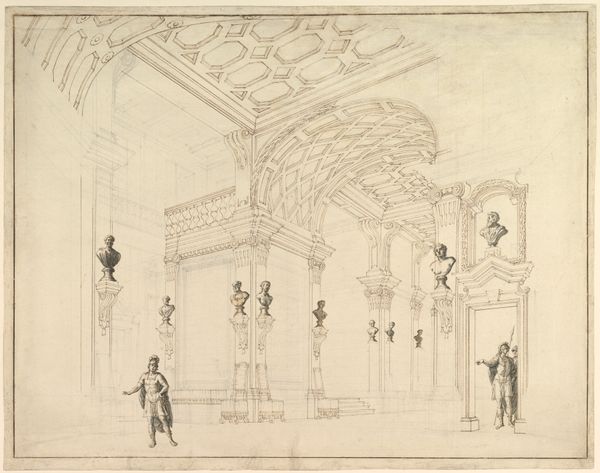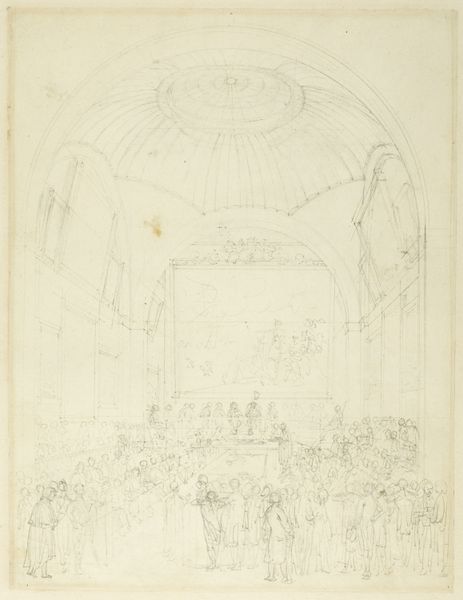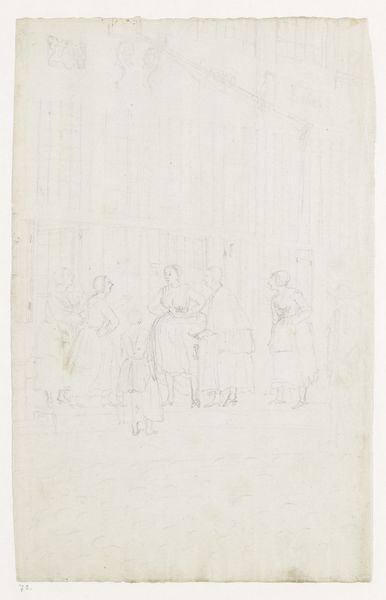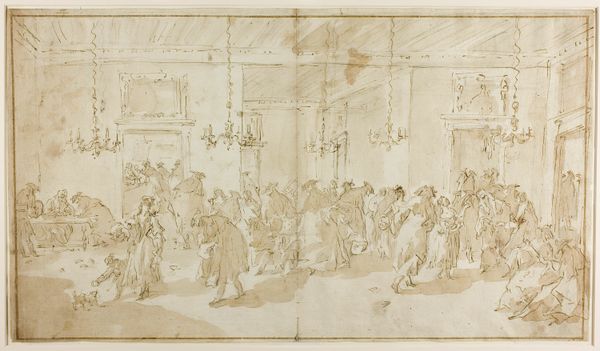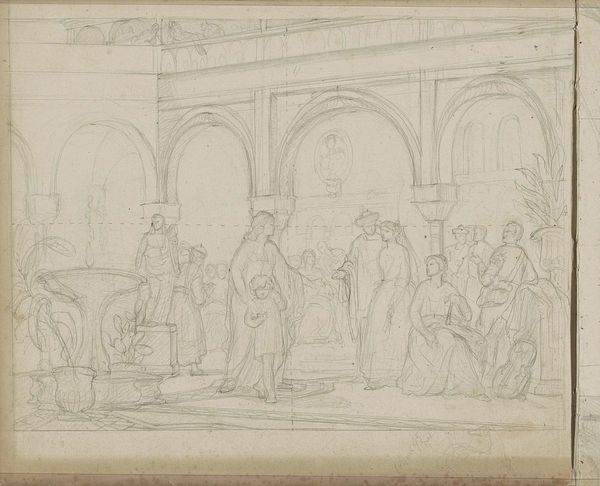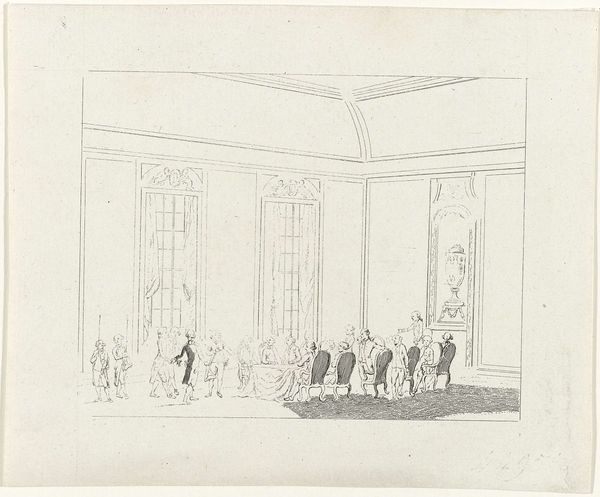
Study for Excise Office, Broad Street, from Microcosm of London c. 1810
0:00
0:00
drawing, print, paper, pencil, graphite
#
drawing
#
neoclacissism
# print
#
paper
#
pencil
#
graphite
#
cityscape
Dimensions: 197 × 261 mm
Copyright: Public Domain
Editor: This is "Study for Excise Office, Broad Street, from Microcosm of London" by Augustus Charles Pugin, dating from around 1810. It’s a graphite and pencil drawing and print on paper. It's interesting; it gives a snapshot of a moment. I’m curious, what do you see in this piece? Curator: I see a powerful document of social dynamics. The Excise Office, in essence, was the tax collection center. Think about that in the context of the early 19th century. This isn't just a neutral architectural rendering; it's a scene of people interacting with power. Who are these figures, do you think? What classes do they represent? Editor: They look like ordinary people, maybe merchants or shopkeepers? Curator: Precisely. And what would their relationship be to the excise office? Paying taxes! Consider the power dynamics inherent in that relationship, the state extracting wealth from the populace. This seemingly mundane scene becomes a site of social negotiation and perhaps even resistance. Are there different groups within this interior? Editor: It does seem that people are clustering in separate small groups. Curator: What might that indicate in terms of class or status? Are they equally comfortable navigating this bureaucratic space? This piece becomes a window into understanding social stratification and how people maneuver within systems of power. Editor: So it’s not just about the building, but about the relationships playing out within it. Curator: Exactly! Pugin’s drawing, even in its sketch form, gives us a glimpse into the complexities of economic and social control. By understanding it through those layers, the image shifts from a cityscape to a place of intersectional struggle. Editor: That's a completely different way of seeing it. Thanks, that gives me a lot to think about. Curator: Indeed, seeing art as social narrative gives us greater appreciation of the history captured within.
Comments
No comments
Be the first to comment and join the conversation on the ultimate creative platform.
